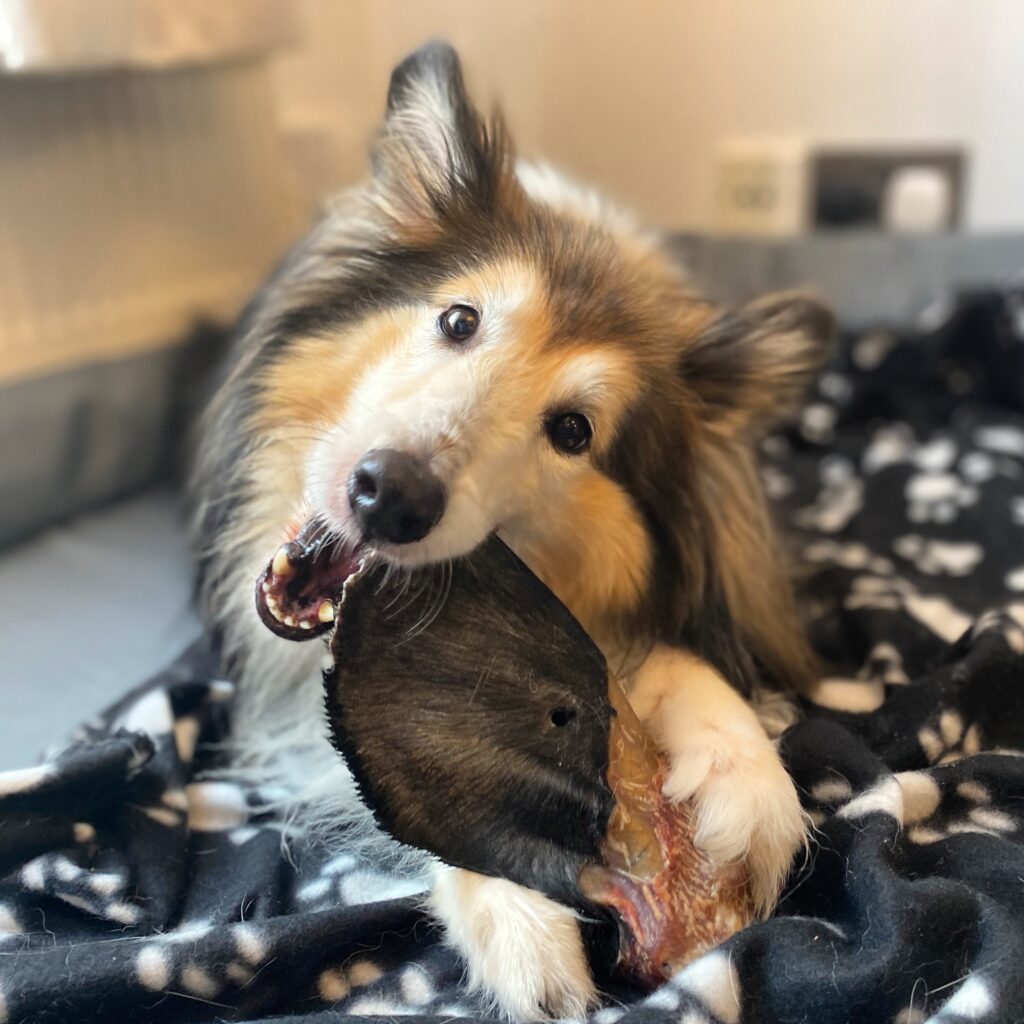Firework Preparation for Dogs
There are several different preferred methods for preparing a dog for fireworks. Some people prefer to provide a safe space, veterinarian prescribed medication, herbal remedies, naturopathic, training, and other methods.
Providing a safe space can include;
- Thundershirts
- Dark and quiet hiding spaces
- Noise blocking methods such as ear defenders or dog snoods
Veterinarian prescribed medication should be the only form of prescribed medication given to your dog. If you use one a friend gave you that was leftover from their pet or medication acquired through other methods (e.g. for humans), your dog could have an allergic or adverse reaction. This is extremely dangerous and can result in the pet’s death. Always get medication prescribed from your vet specifically for your dog and dose appropriately for their size.
Herbal remedies should also be used with caution. Some can have adverse effects on specific breeds, pregnant or nursing dogs, or can be dangerous to dogs in general.
Training is the method we’re going to talk about specifically here.
Training
With training, you can counter-condition a dog to associate something pleasant with something they previously found distressing.
This method is not something that works overnight. It takes time and some dogs can just find the experience of fireworks far too distressing to ever associate with something positive. But most outcomes result in a dog finding things less distressing. For example, instead of shaking in a corner and whimpering, they may instead just stand to alert and pace some.
What do you need to start training counter-conditioning?
Well to start with you’ll need your dog… obviously.
You’ll also need a reward, this is usually food, treats or chews but it can also be toys if that is what works for your dog.
You’ll need a device such as a phone or a computer to play sounds from.
Finally, you’ll need a recording of firework sounds. We find YouTube is the best place to source firework sounds.
This link here is one we use: https://youtu.be/0E4haJHYUJw

So checklist;
- Dog (or dogs)
- Reward (treats, chews, or toys)
- Device to play sounds on (phone or computer)
- Firework sounds (YouTube)
So you’ve got all the items on the checklist. Now what?
Break times
Training can be exhausting for a dog mentally, and putting them in an uncomfortable position can be even more exhausting. Imagine being stood up against your phobia and told you can’t step away from it. Dogs are loyal to their owners and will be uncomfortable beyond their capability at times, so this means you’ll need to decide when enough training is enough.
For the first session it’s best to keep it under 10 minutes, for some dogs even 5 minutes can be too much.
Not all owners know their dog well and there is no fault in admitting this, some people understand dog behaviour more than others. So don’t be tempted to push your dog longer than necessary. ‘Slow means fast’ is a regular term used in dog training for this exact reason.
First training session
First step
Well to begin with you’ll want to get the dog engaged with you, this can be through basics such as ‘sit’, ‘lay’, ‘paw’. But you can also do more advanced tricks if you wish. Be sure to reward them for these tricks though, even if you don’t usually, as you want your dog’s full engagement with you.
Second step
Your dog is now engaged with you. Whilst asking for tricks turn on the firework sounds – on the lowest volume setting – and continue to reward your dog for engaging with you and repeat asking for the fun easy tricks.
Alternatively, if your dog is happier with a chew give them this and watch for their reaction.
Third step
If your dog is comfortable engaging with you or chewing their chew and not looking towards the source of the sound. Slowly turn the sound up, only a few steps at a time.
You will continue to repeat this until you reach your dogs’ comfort threshold.
What is the dog’s comfort threshold?
A dog’s comfort threshold can be hard to pinpoint at times.
If your dog is fidgeting excessively, refusing the reward (treats or chew), unable to take commands or engage at all, then your dog is beyond its comfort threshold.
You’ll want to go back several steps and ensure your dog is happily inside its comfort zone before taking steps towards the threshold again.
Break time?
If this is the first session it may be time to stop for at least 5 hours now. You can continue it again later or tomorrow, but there should definitely be defined breaks between training.
You always want to end on a positive note so if your dog is currently uncomfortable perhaps turn off the sounds and do some fun basic tricks or play a game with your dog.

Po with a furry cow ear 
Eli with a furry cow ear 
Po with a furry cow ear
Second training session
To start your second training session you’ll want to repeat the first session steps.
The difference here is that you’re going to hopefully be able to push a bit further against that comfort threshold.
For some dogs, you’ll be able to push quickly and have the sound going from quiet to full blast quickly within 1 week. Others will take over a month to get to that stage.
Eventually, you want to be able to start the sound on a louder setting rather than quiet, without causing the dog to panic. So instead of starting it on minimal volume, you’ll start on medium volume.
Starting on a medium to loud volume will help prepare the dog for sudden explosions.
On Firework nights
During the days when fireworks are set off such as bonfire night, New Year’s, Chinese New Year (a Chinese holiday), Christmas and the 4th of July (an American holiday). Putting preparations related to your training in place can also help.
Have the same firework sounds that you trained with playing in advance if you know the time, if you don’t know the time the soundtrack linked is 10 hours long and could potentially be left playing most of the day, although this may also be stressful.
We choose to only play it when we suspect fireworks will be let off. Only do this if your dog is comfortable with this sound otherwise, it would be adding stress to the situation. Whilst the fireworks are going off and potentially when playing the sounds in advance, continue your training with treats or chews as outlined above.
The training will be familiar to the dog and in turn a comfort.
We hope we helped!
We hope this step by step guide to counter-conditioning helped you prepare your dog for what is potentially a stressful evening.
If you have any questions or want further information why not comment on the blog post here. Or ask in online dog training facebook groups although be careful as some people are inexperienced or potentially cruel to their dogs and may give bad advice.

Here is a downloadable, printable, and shareable link to a more decorative file 🙂
Firework Preparation for Dogs


